Hawaii is quite possibly the most beloved state in the nation, one that we equate with stunning beauty, true relaxation, and inimitable friendliness. But that doesn’t mean we know all the details about Hawaii that we should know, among them its complex history. There are plenty of fun facts about Hawaii, like that its beaches are open to everyone, which make the state such an exceptional place to spend time in. Here are the Hawaii facts you need to know.
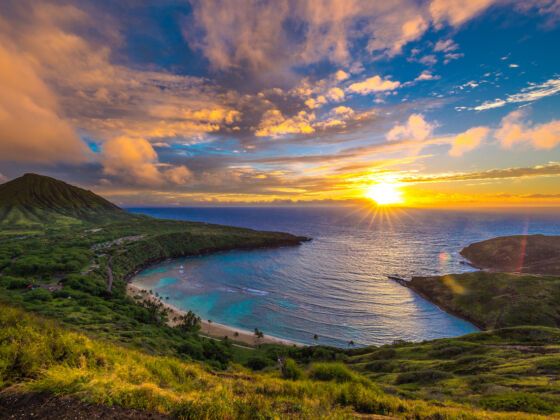

15 Facts You Didn't Know About Hawaii
1. Hawaii was illegally overthrown by the United States.
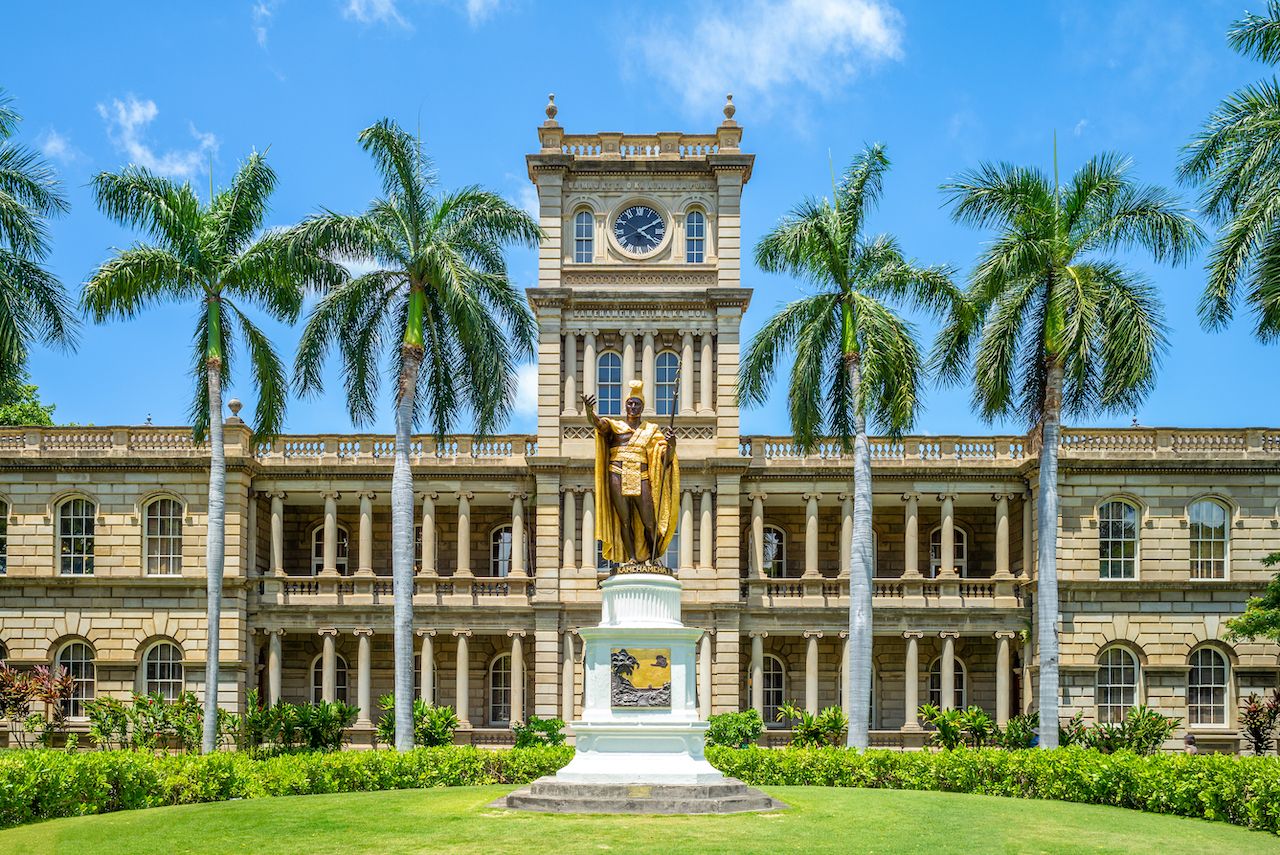
Photo: Richie Chan/Shutterstock
What many people don’t know about Hawaii is that it was once ruled by the Hawaiian Monarchy, making it the only US state that has an actual royal residence, Iolani Palace. During Queen Liliuokalani’s reign in 1893, a group of men from Liliuokalani’s cabinet of American, German, and British descent, known as The Committee of Public Safety, executed a military coup to overthrow the Hawaiian Kingdom.
In its aftermath, US President Grover Cleveland was in favor of restoring the monarchy, but his successor, President William McKinley, saw Hawaii as a strategic power for US troops fighting in the Spanish-American War. Hawaii’s annexation as a US territory followed soon after, and in 1959 it became the 50th US state.
2. The Hawaiian islands are a really long chain of 137 islands.
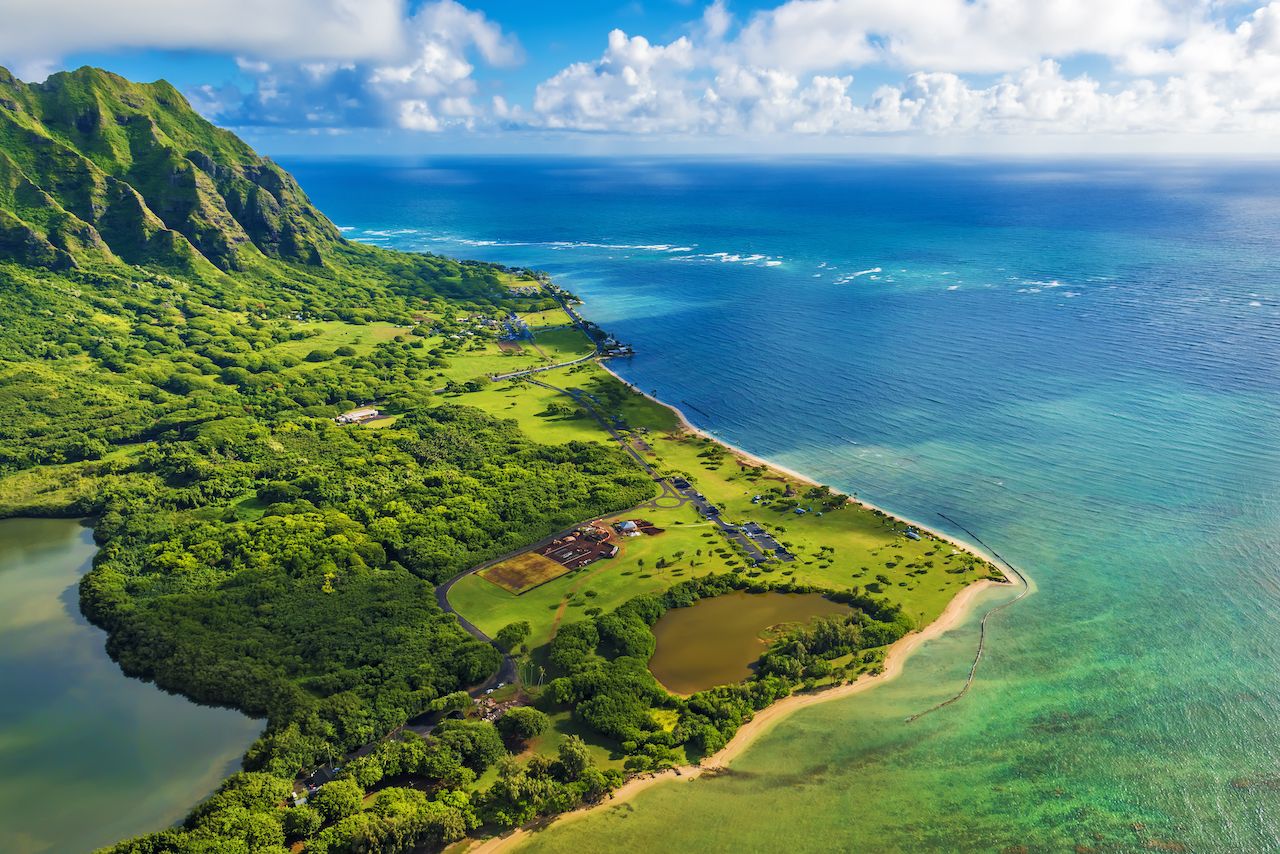
Photo: Ppictures/Shutterstock
Most people know Hawaii is composed of a few islands, since the question often comes up of how to choose which one to visit. In fact, Hawaii is made up of a whole bunch of landmasses. First, you have the eight major islands: Oahu, Maui, Hawaii Island (also known as the Big Island or even just Hawaii), Kauai, Lanai, Molokai, Niihau, and the lesser-known Kahoolawe. In total, Hawaii comprises 137 islands including the major eight, islets, atolls, and reefs that stretch an astonishing 1,500 miles from north to south.
3. Hawaii has 10 of the world’s 14 climate zones.
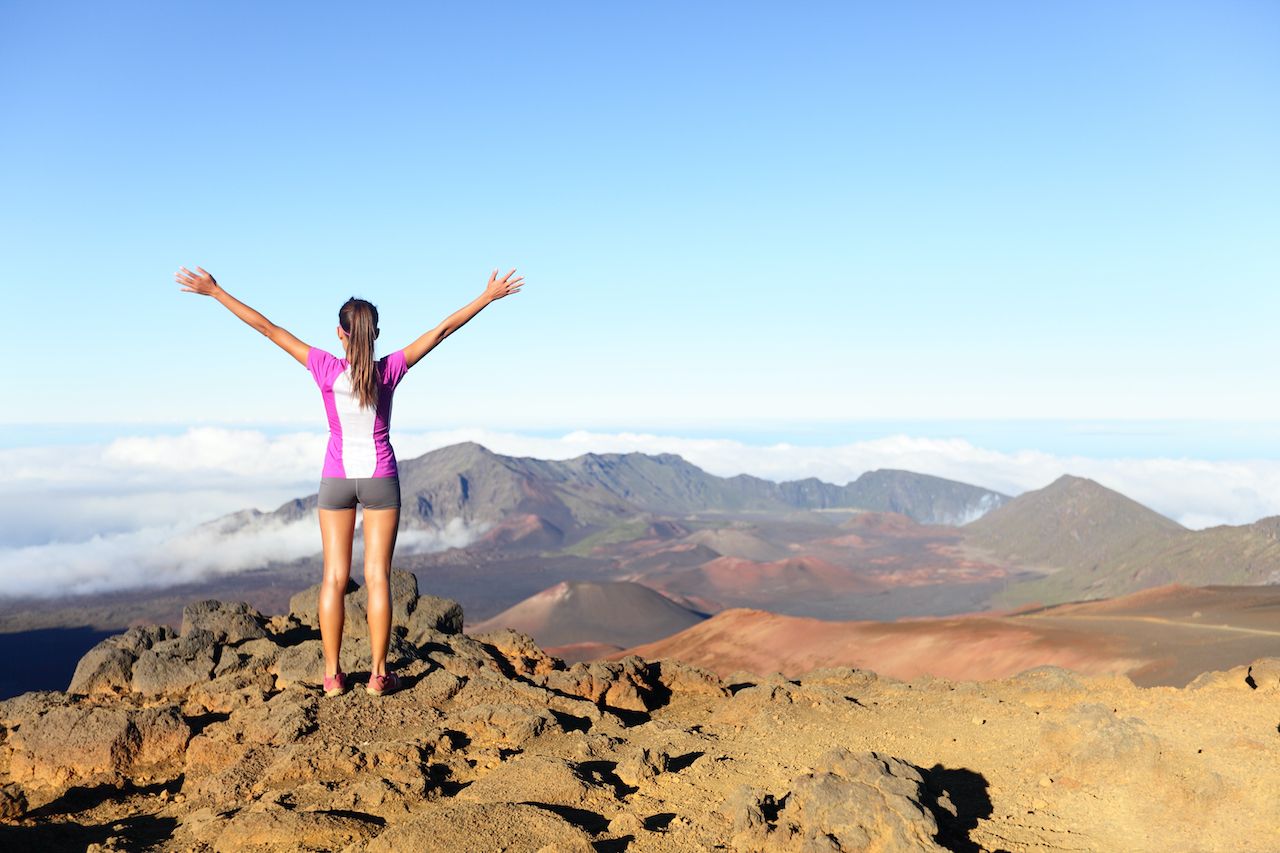
Photo: Maridav/Shutterstock
The island chain isn’t just long, but it also contains an incredible variety of climate zones. On some of the larger islands, you can explore many of these different zones in one day. So while Hawaii enjoys some of the most beautiful white sand beaches in the world, and it has plenty of tropical lushness, its diverse climates may surprise you. On Hawaii Island alone, you can find all 10 zones: from the said tropical and continuously wet to hot desert and even snowy areas, you see and experience pretty much everything Earth has to offer on one island.
4. The Hawaiian islands are the most geographically isolated island chain on Earth.
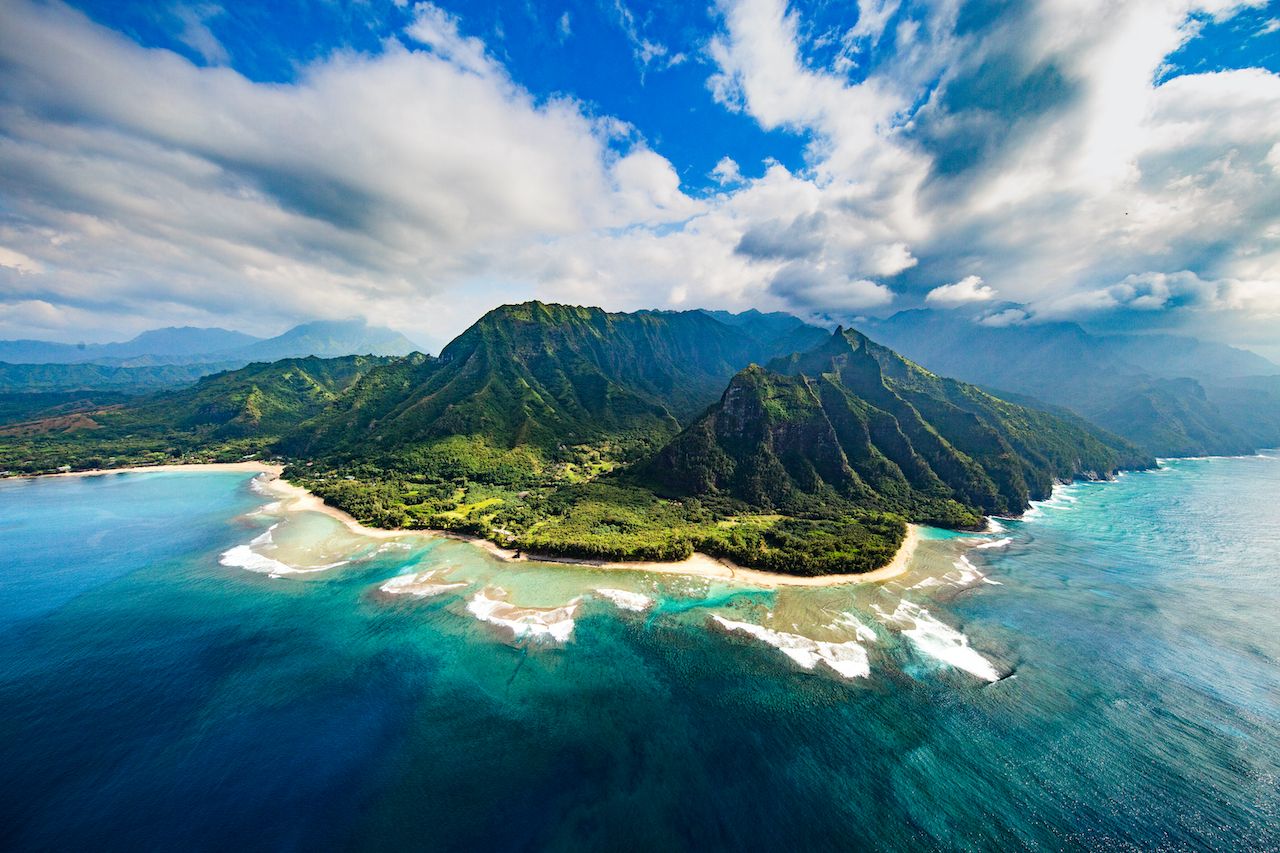
Photo: Shane Myers Photography/Shutterstock
More than 2,000 miles away from any other place, Hawaii is the most isolated island chain on Earth, so it’s no wonder the unique flora, fauna, and frankly, grocery prices, tend to amaze people. Hawaii’s ecosystem developed in almost total isolation. In order to protect these native creatures, it’s illegal to import or own snakes in Hawaii, although researchers have nonetheless found some species — possibly brought within the last few decades — in the wild.
5. The Hawaiian alphabet only has only 12 letters.
For non-native speakers and tourists, Hawaiian names can be a challenge. The reason why might be because the Hawaiian alphabet only contains 12 letters — plus the ʻokina, written as an apostrophe and representing a break in a sound, which is why Hawai’i is locally pronounced as “Hawai-ee,” and the Kahakō, a line over a vowel that adds stress to that vowel. The ʻokina and kahakō change the sound of words so that words with the same Latin letters may have very different meanings. Because so few consonants make up the Hawaiian language, words like Humuhumunukunukuapuaʿa (Hawaii’s state fish) can be challenging for mainlanders to pronounce.
6. There are no billboards in Hawaii.
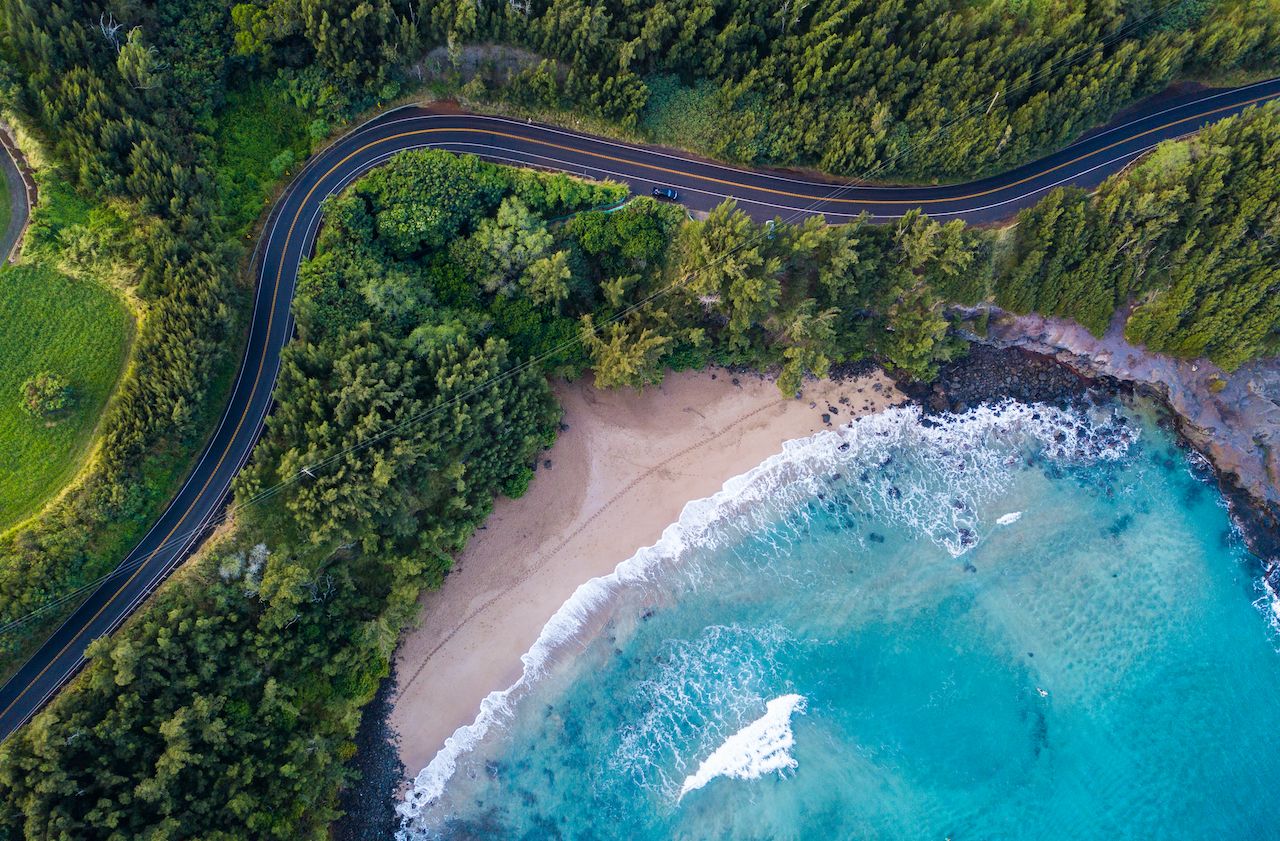
Photo: Shutterstock/Dudarev Mikhail
The first of four states to ban billboards (ahead of Alaska, Maine, and Vermont), Hawaii enjoys wide open spaces free from billboards so that our residents can enjoy distraction-free, scenic driving.
7. Hawaii is the most diverse state in the country.
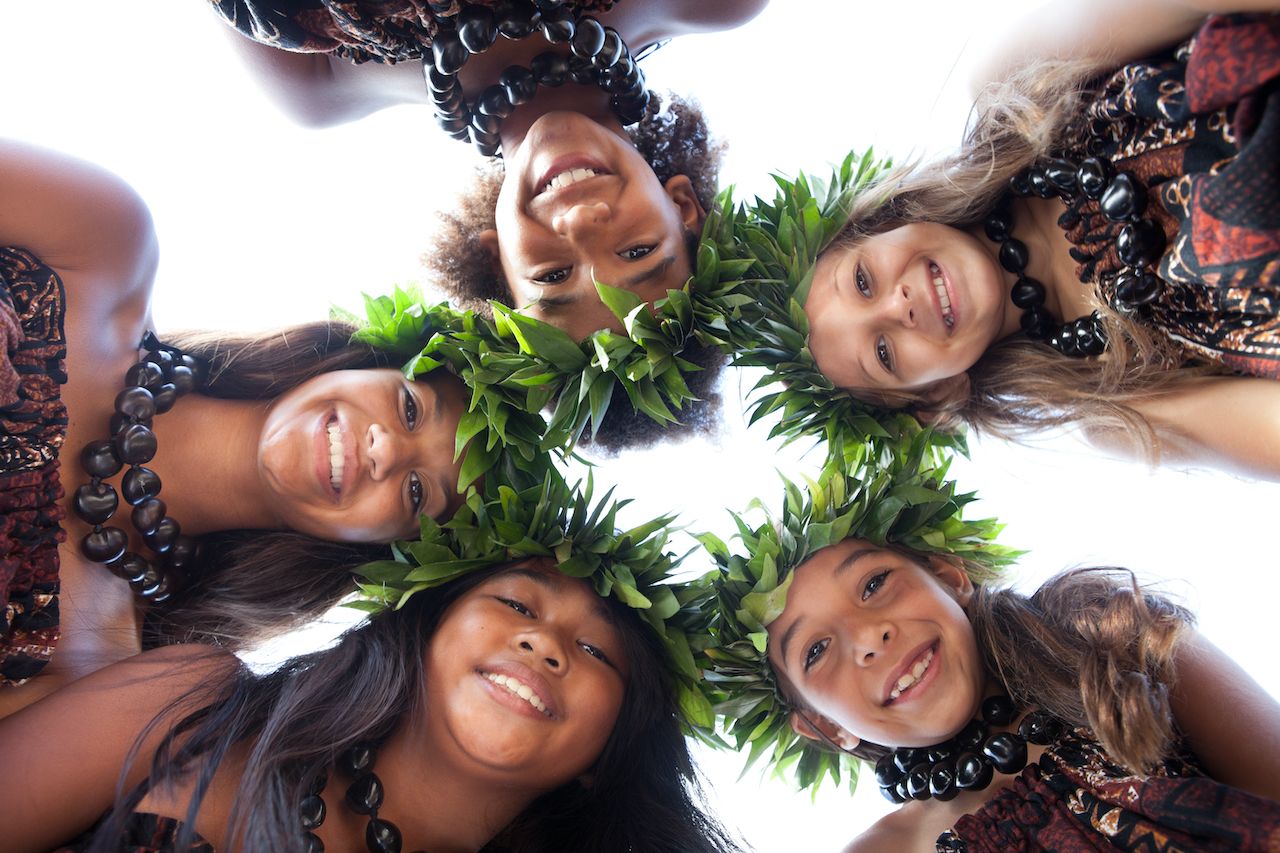
Photo: Deborah Kolb/Shutterstock
Hawaiian, Filipino, Japanese, Chinese, Korean, Portuguese, Black African, white — in Hawaii, there is no single dominant group, and one-quarter of its population is mixed race. In fact, Hawaii is the most ethnically and racially diverse state in the country. Hawaii is a giant melting pot of different cultures.
The Native Hawaiian population decreased dramatically after Western contact by Captain Cook in 1778 brought influenza, smallpox, and sexually transmitted diseases. Nonetheless, today Hawaii’s rich, Indigenous culture thrives. Further, in the 1850s, immigrants from Japan, China, Korea, and the Philippines began arriving to work in the growing and successful sugar business on sugarcane fields throughout the islands. Although the last plantation shut down on Maui in 2016, and sugar production is now a retired practice in the islands, many families have rooted themselves here.
8. All beaches are public in Hawaii.

Photo: photopmh/Shutterstock
Much to the joy of residents and tourists alike, all beaches (with the exception of a few government-use beaches) are public access in Hawaii. Residents or businesses who attempt to obstruct public access to beaches can face hefty fines. Even the most secret-looking beaches are open for your enjoyment.
9. Oahu has a small population of wallabies living in Kalihi Valley.
A popular urban myth that a small group of wallabies, native to Australia, are living in Hawaii was proven with several sightings of this elusive marsupial. Said to have escaped from the Honolulu Zoo, a pair of wallabies grew their small population, which now live mostly in Kalihi Valley on Oahu.
10. The tallest mountain in the world is in Hawaii.
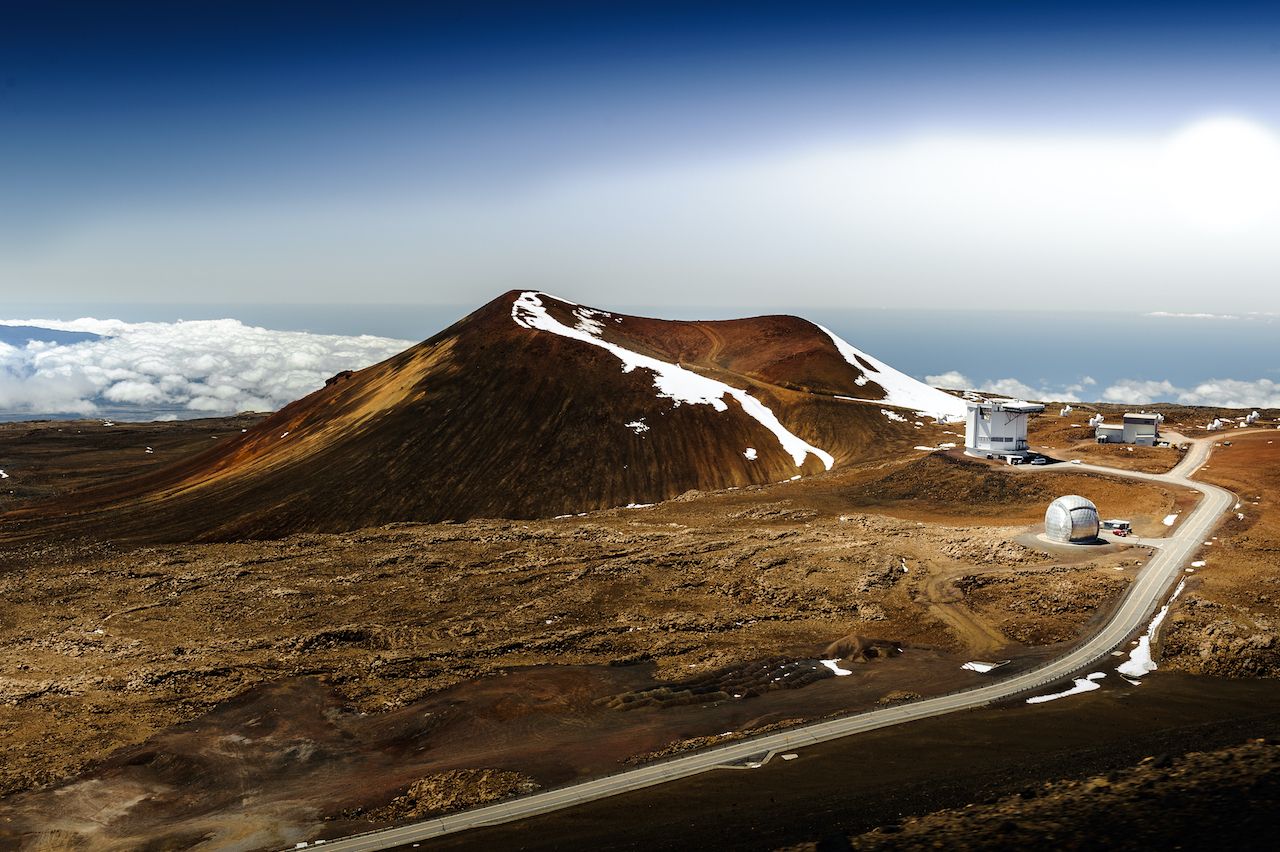
Photo: Josip Pastor/Shutterstock
This may come as a bit of a surprise to all who thought that distinction belonged to Mount Everest. The fun Hawaii fact here is that, while Mount Everest is the tallest mountain above sea level, Hawaii island’s Maunakea is the tallest peak when measured from its base below sea level to its summit. Maunakea, the top of which even gets its share of snowfall, soars 33,500 feet up from the ocean floor.
11. The southernmost part of the United States is actually on Hawaii island.
Key West claims the southernmost part of the continental US, but South Point on Hawaii Island, with its green-sand beach and giant cliffs spilling into the Pacific, is the southernmost point of the entire United States.
12. Hawaii is the unofficial US capital of Spam.
Hawaiians consume more Spam than anyone else in the country — even more than folks in Minnesota, the home of Spam. Besides enjoying the processed, canned meat in regular treats like Spam musubi, where Spam is rolled up with sushi rice and wrapped in nori, they also love it sandwiched between a hamburger patty and a fried egg in what they call a loco moto. Oahu also hosts the world’s largest Spam Festival, called Spam Jam Waikiki.
13. You can mail a coconut from Hawaii.
Your loved ones on the mainland can open their mailbox and be stunned to find an unwrapped — but stamped — coconut waiting there for them. Before you head off to the post office on a Hawaiian island with plans to send the tasty gourd back home, though, note that it has to go through an agricultural inspection first. That can be done at the airport. To make things easier, you could just find a business that has pre-inspected and decorated coconuts, like the Coco-notes from the Panulu’u Bake Shop on Maui, and have them send it for you.
14. Hawaii does not observe Daylight Savings Time.
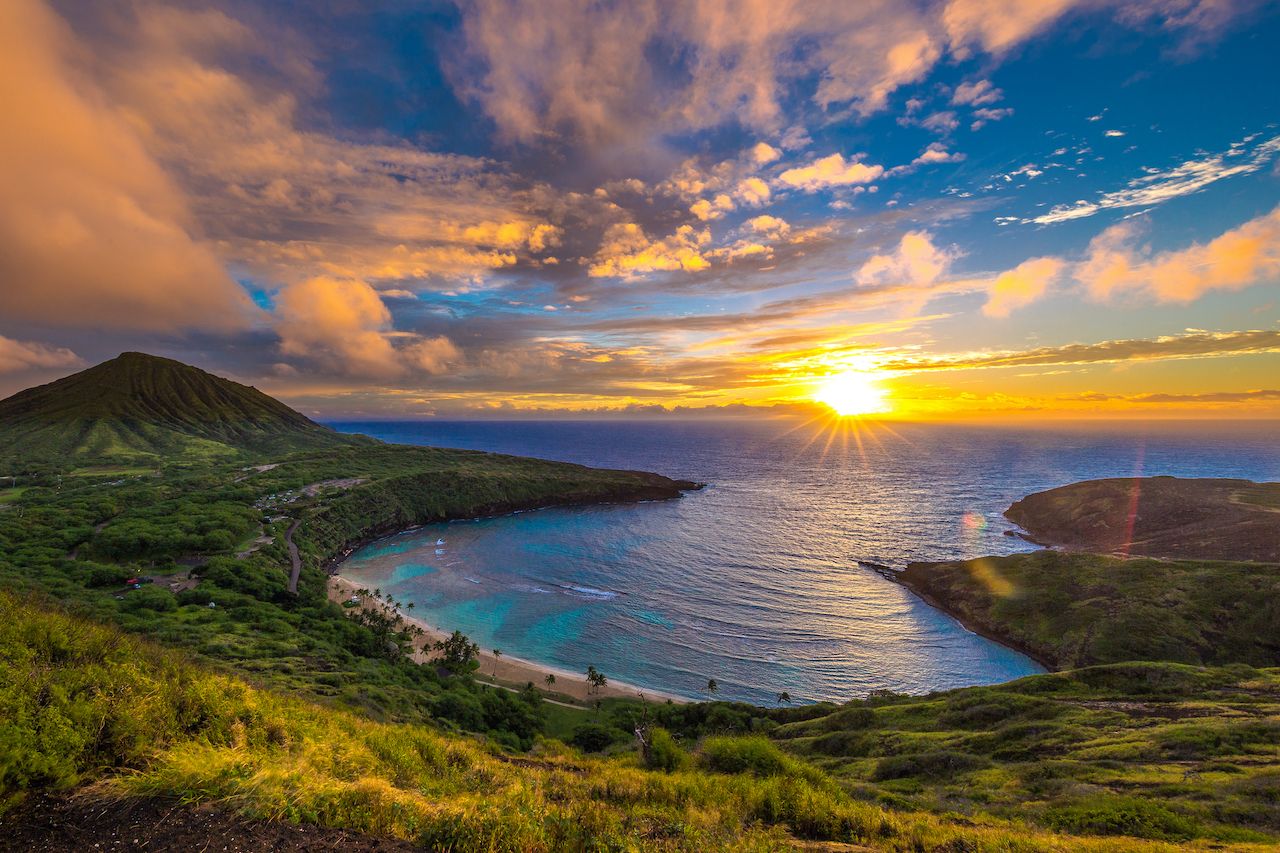
Photo: Shane Myers Photography/Shutterstock
When the rest of the US springs ahead or falls behind, adjusting their clocks an hour forward or backward, Hawaii’s clocks stay exactly the same. Since Hawaii is only 20 degrees north of the equator, its sunset and sunrise times don’t vary enough to bother changing their clocks. Hawaii observes its own time zone, Hawaii Standard Time.
15. Hawaii is the only state whose landmass is growing due to volcanic eruptions.
Perhaps one of the best things about Hawaii is that its landmass is not finite: Hawaii continues to grow.
The Hawaiian islands are formed due to being situated atop a geothermal “hot spot” deep under the ocean’s surface. Hawaii Island is home to Kilauea, one of the world’s most active volcanoes, which is continuously erupting. The lava that spurts up hits sea level and creates new landmass, meaning there is more Hawaii being made every day.
A version of this article was previously published on November 9, 2017, and was updated on January 12, 2021, with more information.